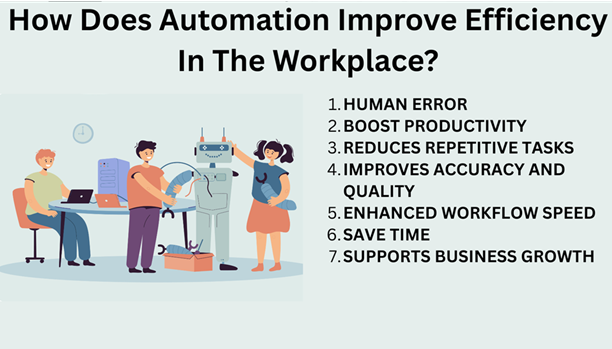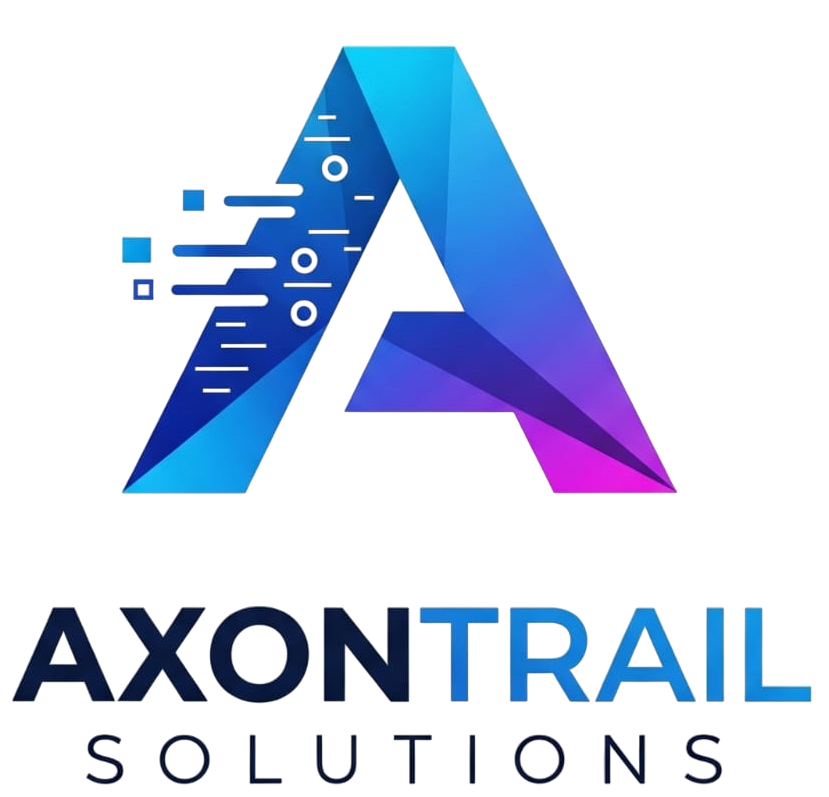
- July 5, 2025
- AxonTrail Editorial Team
- 0
Table of Contents
ToggleBest Automation Processes: You Won’t Believe What Automation Processes Can Do for Your Business!
Automation Processes: Introduction
Automation processes help us handle repetitive tasks quickly and reduce errors. Save time and effort. Automation makes work smoother and more efficient, and it’s about working smarter. Demand for speed and innovation grows daily routine more efficient.
Definition: Automation processes refer to use technology and make work easier. Tasks are repetitive, time consuming or rule- based and automation helps work faster, and more efficient.
What is Automation Processes and why is it important?
Automation is the use of advanced technology, machines and software to perform tasks that were previously done manually. By integrating computer systems, robotics, and other automated tools, processes become faster, efficient, and less human error.
Why is Automation Important?
1.Enhanced Efficiency and Productivity
Automation helps complete tasks much faster, and automated systems can work continuously. Increasing labour cost or resources and time saved to more valuable tasks that require human expertise.
2. Reduce Errors
Automation significantly reduces this risk by following pre-programmed instructions without deviation. And high-quality output, such as manufacturing, finance, and healthcare, improve the overall quality.
3. Cost Reduction and Better Resource
Automation helps lower labour costs, decrease downtime, and optimize resource use. Employees from mundane or repetitive tasks, reallocate human resources to more strategic.
What Are the Main Types of Automation Processes
3 type of main automation processes
1. Programmable Automation
- Programmable automation involves machines or systems.
- Robotic arms in factories programmed to different parts, and a good balance of efficiency and flexibility.
Example: Robotics and electronics manufacturing.
2. Home Automation
- Home automation uses smart devices to control lighting, appliances, and security systems.
- It can save energy, do automated work like fan on , and light other’s home appliances.
- Adjust the temperature automatically, it makes life at home more comfortable and secure.
3. Office Automation
- Office automation using software, digital tools and office tasks automatically makes work easy. It can be an easy office or business environment.
- It saves time, reduces error, easier work and improves communication.
Example: Automatic calendar reminder, email scheduling, or payroll system, data entry.
How Does Automation Processes Improve Efficiency In The Workplace?
1. Human Error
- Automated systems help with typing errors, incorrect formatting, or small data mistakes.
- Predefined rules and process accurately, reducing the chances of mistakes in calculation data handling, or decision-making.
2. Boost Productivity
- Automation systems can work continuously without breaks, higher output and faster tasks compared to human labour.
- This saves time and boosts overall productivity.
3. Reduces Repetitive Tasks
- Automation ensures these tasks are performed the same way every time, increasing reliability. It saves time.
- It also reduces burnout from performing the same tasks every day.
4. Improves Accuracy and Quality
- Using efficiency tools or systems, outcomes become both quicker and more accurate. Inputs lead to smooth workflows.
- High-quality experience leads to satisfied customers and recommend the business to others.
- Business that maintain high standards can outperform competitor, new clients and engage some people
5. Enhanced workflow speed
- Workflow are clearly defined with step-by-step procedures, employees can complete tasks without confusion. Digital platforms like project management, software.
- Clear and efficient communication reduces the need for repeated clarifications, and saves time.
6. Save Time
- Automated systems can complete processes within seconds or minutes that would typically take hours if done manually, like data entry, email scheduling.
- Reduces human error and employee time for more valuable and strategic work. Reduce errors and save valuable time.
7. Supports Business Growth
- Automated systems can easily handle increased workloads, helping businesses grow faster service and consistent quality.
- Real-time data and automated reporting enable quick, informed business swiftly to opportunities and challenges.
How Automation Processes Affects Employment and Workforce dynamics?
1. Job Displacement
- Workers lose their job because machines, automation, or new technologies can do the work faster, and more efficiently.
- Automation remove some old jobs, it also creates new opportunities in technology, robotics, making it important for workers to learn new skills, and changing the job market.
2. Creating of new Job Role
- Automations removes some traditional jobs, opening up new roles like artificial intelligence, robotics, and software development.
- New jobs required higher-level skills such as problem-solving, data analysis and system.
- Management making education gets opportunities to move into more creative and better-paying careers.
3. Demand for New Skills
- Automation is reducing repetitive skills like programming, AI management, cybersecurity, and is becoming a highly valuable market.
- Keep learning new technologies and methods to stay relevant and grow in careers.
4. Hybrid Work Environment
- Hybrid work is very helpful in employees like work partly from the office and partly from remote locations (like home).
- Automation cloud systems, and collaboration tools make it easier to work efficiently in different places.
- Companies save costs of office better Work-life Balance, reduce time.
5. Increased Productivity and Efficiency
- Automation allows machines and software to be faster than humans, and reduces the time.
- Automated systems help companies save money or labour costs.
- Machines and automated systems can work continuously without breaks.
6. Focus on Creativity and Problem-solving
- Automation handles repetitive and time consuming tasks, and problem-solving is now a highly valued skill.
- Employees are better able to be competitive, respond to market changes , and create new opportunities for growth.
Conclusion:
In today’s fast-moving business environment, managing payroll effectively can make all the difference between smooth operations and constant headaches. By embracing automation processes from the very start, companies ensure that every paycheck, tax calculation, and benefit payment flows seamlessly. This not only speeds up administrative work but also frees up HR and finance teams to focus on higher-value activities.
Modern payroll platforms rely on cloud hosting, artificial intelligence, and machine-learning to handle complex rate calculations, automatically adjust to new tax codes, and stay compliant with ever-shifting regulations. When you integrate automation processes into your workflow, manual data entry becomes a thing of the past. Time cards, expense reports, and benefit deductions all feed directly into a unified system, reducing errors and providing real-time analytics on labor costs and productivity trends.
One of the biggest advantages of these tools is the dramatic decrease in costly mistakes. Late payments, misfiled taxes, or miscalculated overtime can damage employee trust and expose your business to fines. With robust automation processes in place, each step is validated and logged, so you have a complete audit trail at your fingertips. Your team gains peace of mind knowing that every detail—from garnishments to 401(k) contributions—is handled accurately.
As payroll technology evolves, the roles of HR and accounting professionals shift away from rote processing toward strategic planning. Rather than spending hours reconciling spreadsheets, they spend time analyzing workforce data, designing competitive compensation packages, and developing talent-retention programs. Predictive insights—powered by automation processes—help leaders forecast hiring needs and budget appropriately for seasonal fluctuations or rapid growth.
Security is another major benefit. Top-tier payroll systems employ data encryption, multi-factor authentication, and continuous monitoring to safeguard sensitive personnel records. Seamless integration with your HR and ERP systems creates a single source of truth, improving financial forecasting and ensuring that labor expenses align with your overall business strategy.
By adopting payroll automation processes, organizations gain a competitive edge: streamlined operations, reduced risk, and the ability to innovate. Ultimately, a modern, automated payroll system doesn’t just pay your people; it empowers them and positions your company for scalable, sustainable success.

